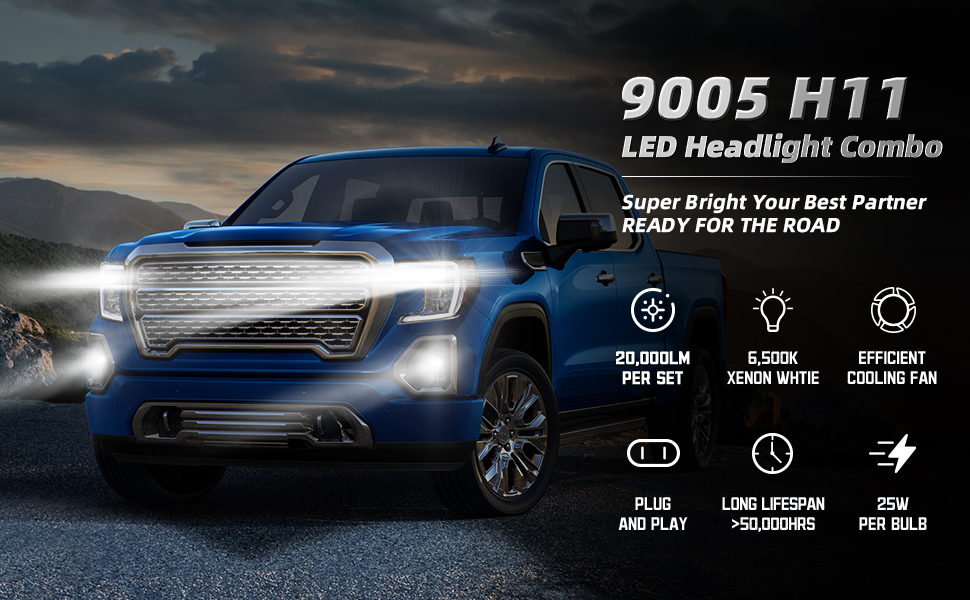2008 Gmc Sierra Headlight Bulb Replacement

The 2008 GMC Sierra, a staple in the North American truck market, utilizes a straightforward but crucial lighting system. Replacing headlight bulbs on this model is a common maintenance task, but understanding the technical specifications, engineering considerations, and available alternatives can significantly improve the outcome and longevity of the repair. This article delves into the specifics of 2008 GMC Sierra headlight bulb replacement, offering insights for automotive professionals.
Technical Specifications and Engineering Choices
The 2008 GMC Sierra typically employs a 9005 (HB3) bulb for the high beam and a 9006 (HB4) bulb for the low beam. These halogen bulbs operate on a 12-volt system, drawing approximately 55-65 watts depending on the manufacturer. The design choice of using separate bulbs for high and low beams allows for optimized reflector geometry for each function, providing a distinct beam pattern for both visibility scenarios. The 9005 and 9006 bulbs are differentiated by their base configurations, preventing accidental interchangeability, a crucial safety feature.
The reflector design within the headlight housing is paramount. It's engineered to precisely direct the light emitted from the filament, creating a focused and compliant beam pattern. The lens material, typically polycarbonate, is chosen for its durability and UV resistance. However, prolonged exposure to sunlight can cause yellowing and clouding of the lens, significantly reducing light output. This is a common issue observed in older Sierras, necessitating lens restoration or replacement alongside bulb changes.
Real-World Performance and Alternatives
The halogen bulbs used in the 2008 Sierra offer adequate illumination for most driving conditions. However, they fall short compared to modern lighting technologies like LEDs and HIDs in terms of brightness, efficiency, and lifespan. Several aftermarket alternatives exist, each with its own set of pros and cons:
- Halogen Upgrades: These bulbs, often marketed as "performance" or "extended life," offer slightly improved brightness or longer lifespan compared to standard halogen bulbs. They are a direct replacement and generally don't require any modifications to the vehicle's wiring. Pros: Simple installation, relatively inexpensive. Cons: Marginal performance improvement, potential for shorter lifespan due to increased filament temperature.
- LED Conversion Kits: These kits replace the halogen bulbs with LED bulbs. They offer significantly brighter output and longer lifespan. Pros: Increased brightness, lower power consumption, long lifespan. Cons: Can be expensive, may require modification to the headlight housing, potential for poor beam pattern if not properly designed, may trigger "bulb out" warnings due to lower current draw, and are often not DOT compliant for on-road use. Proper beam alignment is crucial to avoid blinding other drivers.
- HID Conversion Kits: Similar to LED kits, HID (High-Intensity Discharge) kits replace the halogen bulbs with HID bulbs. They offer even greater brightness than LEDs. Pros: Extremely bright, good visibility. Cons: Expensive, require ballast installation, generate significant heat, can be difficult to install, may not be DOT compliant, and can cause glare if not properly aimed. Often require projectors for optimal beam pattern.
When considering aftermarket upgrades, it's crucial to prioritize safety and legality. Ensure the chosen bulb meets DOT standards and that the beam pattern is properly aligned to avoid blinding oncoming traffic. In many jurisdictions, HID conversions in housings not designed for HIDs are illegal. Professional installation is highly recommended for HID and LED conversions to ensure proper wiring and alignment.
Reliability Aspects and Maintenance Tips
The lifespan of halogen bulbs is typically around 500-1000 hours. Factors such as vibration, voltage fluctuations, and bulb quality can affect lifespan. To maximize bulb life:
- Avoid touching the glass portion of the bulb. Oils from your skin can create hotspots and cause premature failure.
- Ensure proper voltage. Overvoltage can significantly shorten bulb life.
- Use quality bulbs from reputable manufacturers. Cheaper bulbs may have shorter lifespans and lower light output.
- Inspect headlight wiring and connectors for corrosion or damage. Replace damaged components.
- Consider using dielectric grease on the bulb connectors. This helps prevent corrosion and ensures a good electrical connection.
Headlight lens clarity is also crucial for optimal performance. Regularly clean the lenses with a plastic cleaner and polish. Consider using a headlight restoration kit to remove yellowing and clouding.
Future Trends
The automotive lighting industry is rapidly evolving. LEDs are becoming increasingly prevalent in new vehicles, offering superior performance and efficiency. Adaptive headlights, which automatically adjust the beam pattern based on driving conditions, are also gaining popularity. Laser headlights, offering even greater range and brightness, are starting to appear in high-end vehicles.
As these technologies become more affordable, they are likely to trickle down to older vehicles through aftermarket upgrades. However, it's crucial to ensure that these upgrades are implemented safely and legally.
Conclusion
While the 2008 GMC Sierra relies on relatively simple halogen lighting technology, understanding the nuances of bulb replacement and available alternatives is essential for automotive professionals. Prioritizing safety, legality, and proper installation techniques will ensure optimal performance and longevity. The future of automotive lighting is bright, with LEDs and other advanced technologies poised to revolutionize visibility on the road. Automotive technicians must stay informed about these developments to effectively service and maintain vehicles equipped with these emerging systems.
